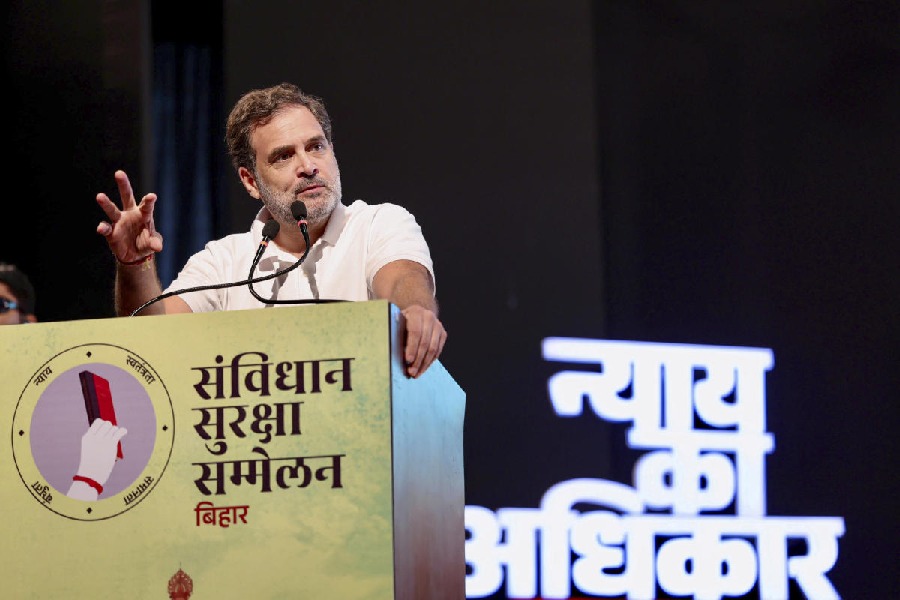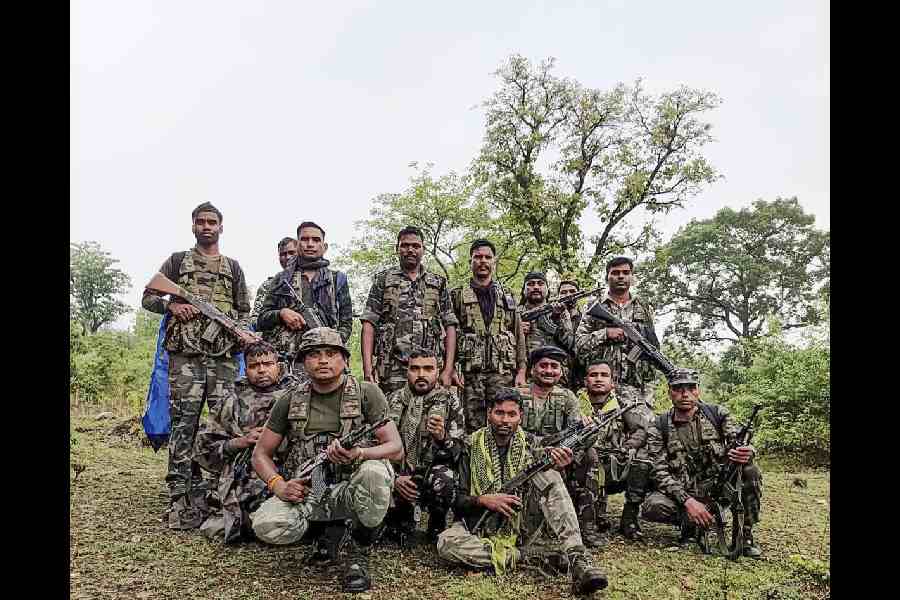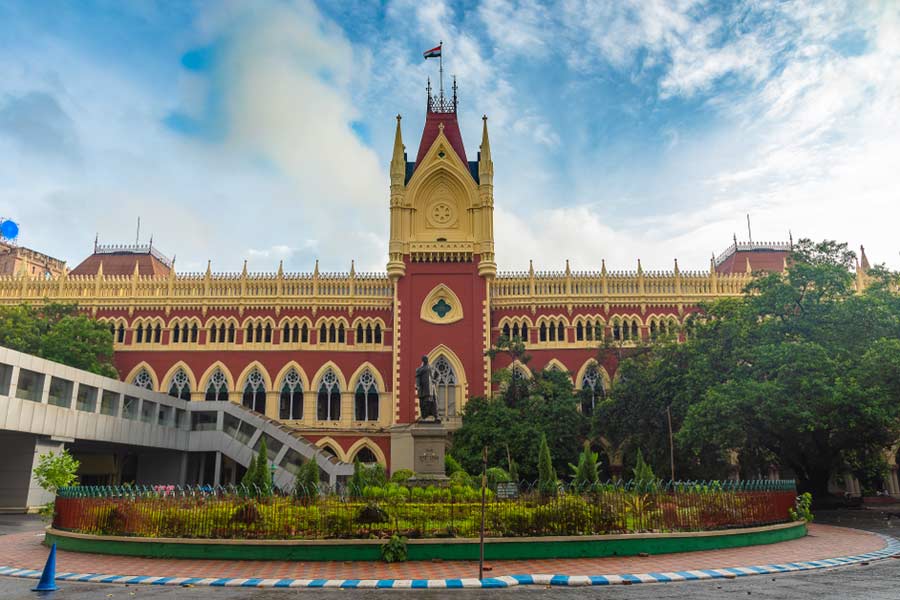 |
 |
My uncle returned one evening from a concert in St Paul’s Cathedral with a purloined item; he’d recorded the performance on a cassette. The singer’s name was Subinoy Roy. It was just after the mid-1970s, when I was becoming vaguely curious about Indian music. But Tagore songs were, to me, largely anathema.
It was winter, of course: holiday season for me, and the season for performances. The singing was magisterial and melodious. I was drawn to Roy, but my conversion wasn’t immediate, as I still hadn’t been converted to Rabindrasangeet. By 1978 though, I was circling round Hindustani classical music and playing the harmonium and trying out, from the Gitabitan, the songs that had recently become familiar to me from Subinoy Roy records: Timiramaya nibida nisha and Sakala garba duro kori dibo (these were on a 45 rpm compilation); Bahe nirantara ananta anandadhara (this was an ancient Hindustan Records 78 rpm), and other songs. How I recuperated these from my parents’ record collection — to which, before, I’d been indifferent — I don’t remember. I wasn’t instructed in my Bengali past; I began to reconstruct it for myself. The recovery was necessarily odd, narrow, and selective. As a consequence, Subinoy Roy became, to me, Rabindrasangeet. This, in spite of the fact that there was a great Rabindrasangeet singer at home, under whose nose I’d grown up: Bijoya Chaudhuri — my mother. It took me a while to comprehend her uniqueness as a singer; you don’t think of a parent as an artist.
Nevertheless, there are connections between my mother and Subinoy Roy. Some of these are personal. With hindsight, it’s no mystery that we had those records. My mother had admired Roy ever since she was a teenager in Sylhet, and heard his Tumi daak diyechho kon sakale on the radio. (The young man’s voice on the recording is thin, bodiless, sweet, and deceptively innocent — deceptive, because the instinct for perfection is already evident.) So, when my parents returned to India from England in 1961, my mother naturally decided to pursue Rabindrasangeet under Roy’s tutelage. She lasted two sessions. The reason: apparently while the second tutorial was being undertaken it rained, and my father wasn’t permitted by her new teacher to sit inside, but had to wait in the car. My mother wouldn’t tolerate this: the tutelage ended. More than two-and-a-half decades later, she forgave Roy his transgression, and invited him to direct her for her second long-playing album of Rabindrasangeet. That’s when I — a student of Hindustani classical music by now — met him during visits to Calcutta. He was small, at once slightly enfeebled and quietly elegant, non-committal, uninterested, on the whole, in talking about music — although he mentioned his devotion to Ustad Amir Khan, and embarked briefly, one afternoon, upon a bandish in Raga Bahar. He also remarked that Mor bhabonare ki haowae matalo (this song was to be included in the album) was modelled closely on Gaud Malhar: something I hadn’t noticed before, but which was obvious once pointed out. These were flashes that connected the man before me to the voice and music I’d heard. Otherwise, the relation between them wasn’t clear. When he began to sing, he immediately stopped being the non-committal visitor, though he remained distracted by something he could hear — as if singing were also listening (as it is, an engrossed attendance to one’s own rendition), his head jerking and eyes blinking at the sound of his voice.
The Tagore-song by then was no longer the anathema it once was; anyway, it wasn’t the songs themselves as the manner in which they’ve been interpreted that had repulsed me. This manner has to do with treating the songs as if they were vehicles for expressing — indeed, enacting — the singer’s emotions. For this purpose a particular style was developed in the 1960s and 1970s, partly under the influence of the middle-period (and occasionally middlebrow) trio of Suchitra Mitra, Kanika Banerjee, and Hemanta Mukherjee, and stretched thin by their many mimics. (What I’m about to say doesn’t apply so much to their early style, or, say, to an anomalous performance like Debabrata Biswas’s Akaash bhara surja tara in Ritwik Ghatak’s Komal Gandhar.) It’s a mode of delivery that still hasn’t gone away, bringing the human being and human drama to the centre. The song, and music, became secondary; the human being, — or a genteel, kitschy, middle-class Bengali idea of the human being — demanded attention. People would say, “Words are all-important in a Tagore-song,” since words seemed to directly state and communicate emotion (darad), as if this excused the frequently atrocious way in which the songs were sung.
What are the methods by which Rabindrasangeet singers dramatize the human? The first has to do with the use of the ‘o’ or ‘aw’ sound when singing. Hindustani classical vocal music is based on what’s called aakar, the ‘ah’ sound, as it not only makes for full-throated singing, but shifts attention from what’s inner, psychological, and human, to the note itself. ‘Ah’ is close to the cry, to utterance, and to breath; ‘aw’ to the spoken, to diction, to the socialized. In Western popular music, listen to the same song performed by a white singer and by, say, Louis Armstrong, and you’ll find the social associations of the former and the liberated quality of the latter to do with the use of the ‘aw’ and ‘ah’ syllables respectively. Or go to YouTube and search for Julie Andrews singing “Wouldn’t it be Luverly” in the West End production of My Fair Lady — at this point in the story, Eliza Doolittle is a Cockney flower-seller, and opens her performance by exclaiming a generous, wide-mouthed “Ow!” The aakar with which she then sings brims with life-affirming energy. Compare this to Andrews singing, in the same production, “I Could Have Danced All Night”. Eliza, by now, has been educated and ‘humanized’ by Professor Higgins; the ‘ah’ sound is gone; the singing is beautiful but domesticated, contained within and defined by its new middle-class milieu; even ‘danced’ sounds a bit like ‘dawnced’. Now, Tagore’s songs are full of ah-containing keywords — like ananda and aakash, for instance, suggesting infinity, a liberation from the human, and the universal in the literal sense of that word (‘of the universe’). But such words are constrained by the educated, polite aw-dominated delivery of Rabindrasangeet-singing. Since we’re discussing comparisons, listen, if you can, to the young Kanika Mukherjee’s recordings of Se din dujane and Oi malatilata dole, with their open aakar, and then the Kanika Banerjee we know, mature, constrained, tutored and in some ways limited by Santiniketan.
Related to the ‘aw’ sound is the parody of the meend in much Rabindrasangeet-singing. The meend is one of the bases of our classical music, and distinguishes it from Western music’s straight notes; its closest equivalent in Western music is the glissando, or the gliding way of connecting one note to another. The meend is the vehicle of aakar, of the breath and the voice; it delineates the shape of the raga during the alaap. And it gives to Indian music a quality simultaneously fluid and reflective; when unnecessarily prolonged or emphasized, as it often is by Tagore-song singers, it leads to an air of ponderousness, of false gravitas, which again returns us to the kitsch humanism that informs the way this genre is performed.
My reason for being drawn to Subinoy Roy and Bijoya Chaudhuri is simple: both, in their art, remove the human from centre-stage — the result is an unsentimental attention to precision (invoking thereby the song’s formal and abstract provenance, reminding us that music is as close as we can get in the arts to mathematical precision); an immersion, without demonstrativeness, in the voice’s timbre, its most sensuous and spiritual quality; and an eschewal of obvious emotion for calm and joy. That joy — rather than the drama of human emotion — is fundamental to art: it is related to emotion, but the nature of the relationship is mysterious. Thinking about Roy and Chaudhuri, I found myself turning to lines from a near-forgotten essay by the discredited and astringent T.S. Eliot, in which he’s speaking of another genre: “Poetry is not a turning loose of emotion, but an escape from emotion; it is not the expression of personality, but an escape from personality.” Eliot is being provocative; his concluding observations are apposite to what I’ve put on the table: “There are many people who appreciate the expression of sincere emotion in verse, and there is a smaller number of people who can appreciate technical excellence. But very few know when there is expression of significant emotion, emotion which has its life in the poem and not in the history of the poet.” Clearly Roy and Chaudhuri are different kinds of artists; moreover, Roy is relatively neglected, Chaudhuri completely ignored. Roy excavates a Tagore at once complex, austere, and beautiful, a Tagore we might have ignored but for him, while through Chaudhuri’s rendition of compositions like Eso nipobone, Dukhero beshe esechho bole, and Sraboner dharar mata we’re shown the vocal range Tagore-songs require, from the lower notes to, often, the pancham in the taar saptak, a range covered by her with an extraordinarily tranquil energy in service to musicality. Neither she nor Roy subject Rabindrasangeet to unnatural retardation or slowness in order to add a bogus weightiness to the song. In both we glimpse, if we care to, the joyous perfection that accompanies the abnegation of the human.











